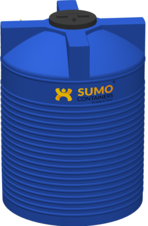CONTRACT MANUFACTURING
Businesses today thrive by focusing on what they do best and leaving the rest to others. Contract manufacturing seems to fit neatly into this practice. In addition to allowing companies to focus on core competencies, contract manufacturers offer numerous other advantages over in-house manufacturing, including lower costs, flexibility, access to external expertise and reduced capital.
Even with solid assumptions, it may be a struggle to achieve the hoped-for benefits. That's largely because it's difficult to manage complex relationships. Ideally, the parties would create perfect plans that would make it possible to manage the relationship.
Instead, organizations need to take a strategic approach to contract-manufacturing relationships. Here we explain how businesses can do this by rigorously assessing when and why to use contract manufacturers, setting the appropriate working model and developing an effective organization.
Contract Manufacturing: Win-Win Strategy
Success in contract manufacturing is lead by factors such as product quality, cost competitiveness, delivery schedule and CM/Customer relationship.
In today's competitive environment, the contract manufacturing business is quite challenging The development of new components and technologies demands high capital investment and specialized resources. The increasing complexity of products has phased out manual operating methods and forced manufacturers to utilize hi-tech automatic manufacturing techniques. This works out to be more cost-effective for them since their internal resources can be focused on more important aspects of business such as product development and marketing. This trend has led to a boom in a phenomenon called contract manufacturing (CM). The CM business in the field of rotomolding is growing rapidly worldwide, and is expected to further accelerate at a very robust rate over the next five years. Globally. It has been observed that production equipment being used by different manufacturers is quite similar. In manufacturing, much of the cost competitiveness comes from the manufacturing process yield. This yield can be increased through an accurate control and handling of the manufacturing equipment, careful selection of materials and their proper handling on the product line. In other words, the manufacturing process yield depends on the knowledge of the production process expertise, and how well they are able to motivate and educate production operators.
Winning Factors in Contract Manufacturing
Contract manufacturing has undergone a tremendous change with the transition from through-hole to surface-mount technology. New material and new formulation techniques have been developed. Consumer awareness and global competition has made it mandatory for manufacturers to produce high-quality products at minimum cost within the delivery schedule. In addition, a thorough understanding of current manufacturing technologies is essential. Factors important for achieving success in CM are product quality, cost competitiveness, delivery schedule and CM/Customer relationship.
Product Quality
Perhaps the most important thing in contract manufacturing is to produce high-quality products. This is not a very difficult task for Sumo Containers. Modern hi-tech automatic manufacturing processes are available of manufacturing consistently high-quality products.
Cost Competitiveness
Experts expect that industry will quadruple over the next 2 yr .We are using latest tunnel systems.Which is a capital intensive, quality & cost competitive ' process. Our mission to protect and promote businesses. We fulfil our mission in several ways: -Sumo Containers contributes to the availability of good products on national & international level by stimulating the development of innovative designs, by assisting companies with approval procedures, by evaluating the safety, efficacy and quality of new products prior to authorisation and by constantly monitoring them once they are on the market.
Delivery Schedule
Time is money for us. As All Contract manufacturer demand that their products be delivered within contractual time frames. The success of a CM largely depends on whether it is capable of meeting this requirement of Customers. Maintaining a Consistent and strict delivery schedule involves close planning of the entire production. Such a planning involves; Control of incoming materials. Maintaining an operating schedule of the production line. This can be taken care of by determining the number of lines and shifts needed.
CM/Customers Relationship
We know that the success of contract manufacturing depends on the mutual understanding between the contract manufacturer and the customers. The former must know how to service the latter, and must make clear his requirements (to the customer) in advance. The relationship depends on mutual trust, and hence the communication between the two parties must remain open. This will help both the sides to understand the requirements of maintaining the partnership.
Managing the Manufacturing
In manufacturing, obtaining a better yield through controlling the process, process optimization, understanding and implementing new technologies, and providing training and motivation to the production floor personnel. Controlling the process : Process control is a tool which helps the manufacturer to run the process in such a way that results are as per the specifications. Process control is performed by:
determining process control limits (using the process window)
Monitoring process results (data collection)
Analyzing the collected data, and
Implementing corrective actions, if necessary
The manufacturing process consists of a number of steps, and for each manufacturing step there are process parameters with upper and lower control limits. The desired setting of machines and their tolerance can be derived out of this measurement. It is advisable to document and describe in detail all agreed specifications and determined process parameters. This document called 'process description' is an important document for controlling and optimizing the manufacturing process. After the individual process parameters have been determined and defined, the total production line needs to be set up according to the process description document.The most tangible aspect of process optimization is the balancing of cycle time of the manufacturing line. The process description also needs to be updated.
We are providing training and motivation to manufacturing personnel. Today, manufacturing equipment is very sophisticated. The person operating them should have a thorough knowledge of machines, their working principles, various parameters, the manufacturing process, materials and so on. Moreover, to use sophisticated equipments effectively, employees working on the production floor must be adequately trained. Unfortunately, some manufacturing organizations are ready to invest time and money in purchasing sophisticated equipment but not on training their personnel. It should be realized that training of the manpower is never an expenditure. It is an investment which brings quick returns. Skills and knowledge can never be acquired overnight through unorganized training, We are running many training program ideally in-house a and, if the expertise is not available, professional bodies/institutes may be contacted. The most important way to succeed in the CM (contract manufacturing) business is motivating and training the manpower. Technology and material-related issues can be resolved through a judicious use of resources, but producing quality product depends heavily on the training and motivation of people on the production floor.
Conclusion
The Contract Manufacturing business is growing at a very good pace, and Health Biotech Limited is making profitable use of this opportunity. Our success as Contract Manufacturer in the field of rotomolding formulation depends mainly on our product quality, low production cost, on-time delivery and the CM/Customer, Client relationship. Positively, Process optimization and training of production personnel is also playing a crucial role to achieve goals of our organization.





